Through the FIRNS initiative, TENT is working on a new blueprint for investment into nature recovery.

Europe, contrary to popular opinion, still boasts an abundance of biodiversity, keystone species and large carnivores. You just need to know where to look...
Asturias – the wild, beating heart of northern Spain, where endless beech forests course through the limestone valleys; where golden eagles soar above blossoming meadows; and where the Cantabrian brown bear roams the bluffs and peaks. In this little-known gem of wild Europe, one can explore the dramatic coastlines, and within an hour, journey through the Cantabrian Mountains to observe brown bears. It is truly Spain’s ‘best kept secret’, a region full of natural and cultural heritage, where wildlife conservation is dovetailing with awe-inspiring ecotourism opportunities.
This May, The European Nature Trust hosted two trips for national and international journalists to visit Asturias and search for the brown bears with our project partners, Fundación Oso Pardo (FOP). ‘Noise for nature’, as TENT likes to call it, is critical to build awareness of brown bear conservation, to help others learn about this wild gem of European wilderness, and connect with the remaining wild areas of our continent.
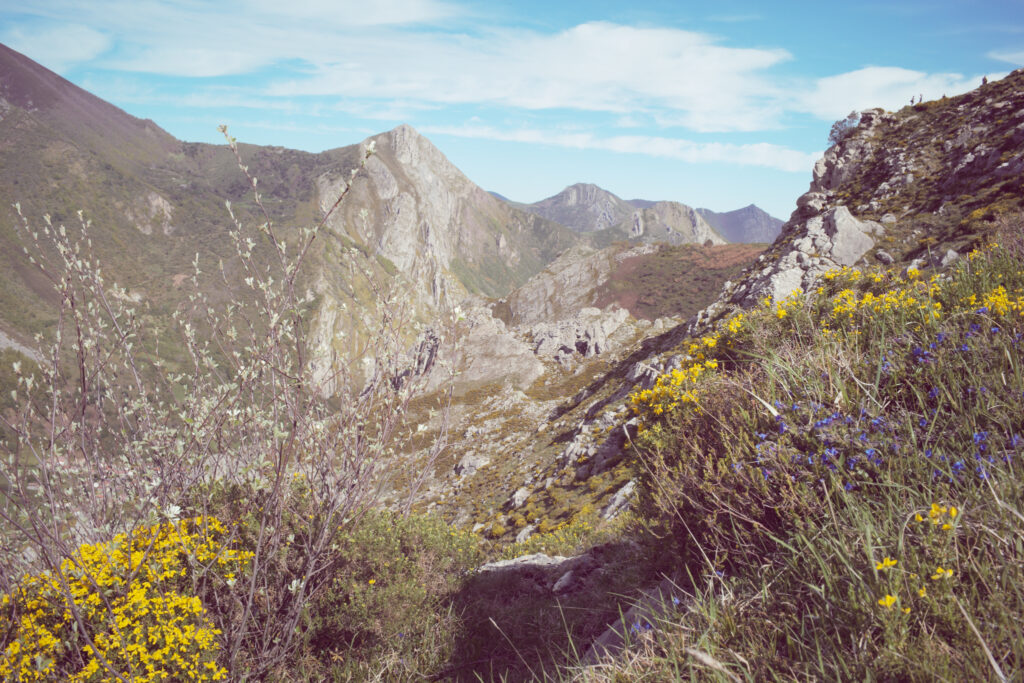
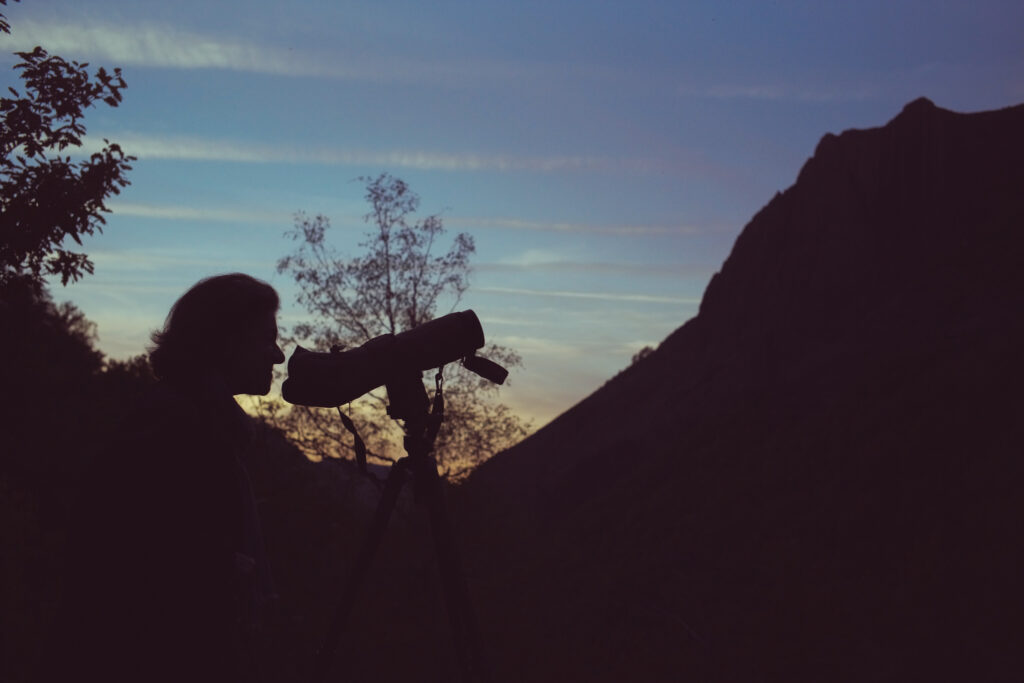
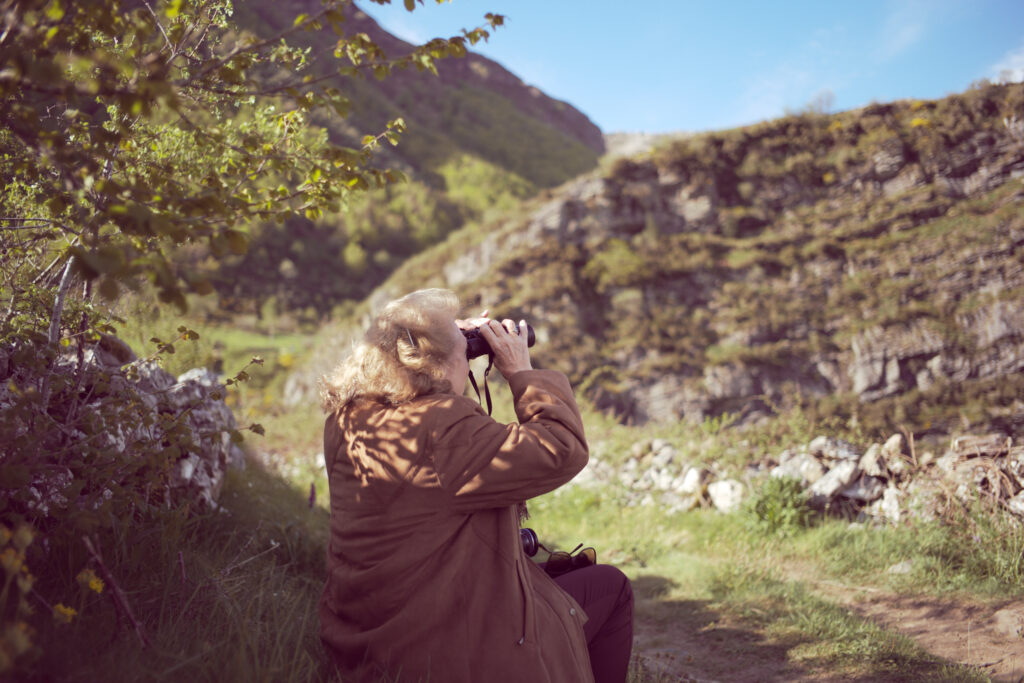
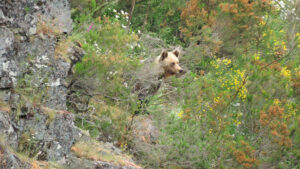
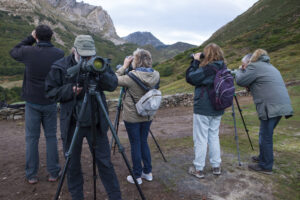
Once widespread across the whole of Spain, the brown bear was hunted to a low of just 80 individuals in the early 1970s; bear populations were eradicated in the south, and became relict to the regions of Asturias, Cantabria and Castilla y León. However, as the conservation movement grew in Spain, the bear was awarded protected status in 1973. Today, a network of protected natural parks has been established throughout the Cantabrians, preserving key bear habitats. FOP work tirelessly to study the biology and conservation needs of the bear; thanks to their dedication, the Cantabrian population has recovered to around 350 individuals, split into a western (300 bears) and eastern subpopulation (50 bears).
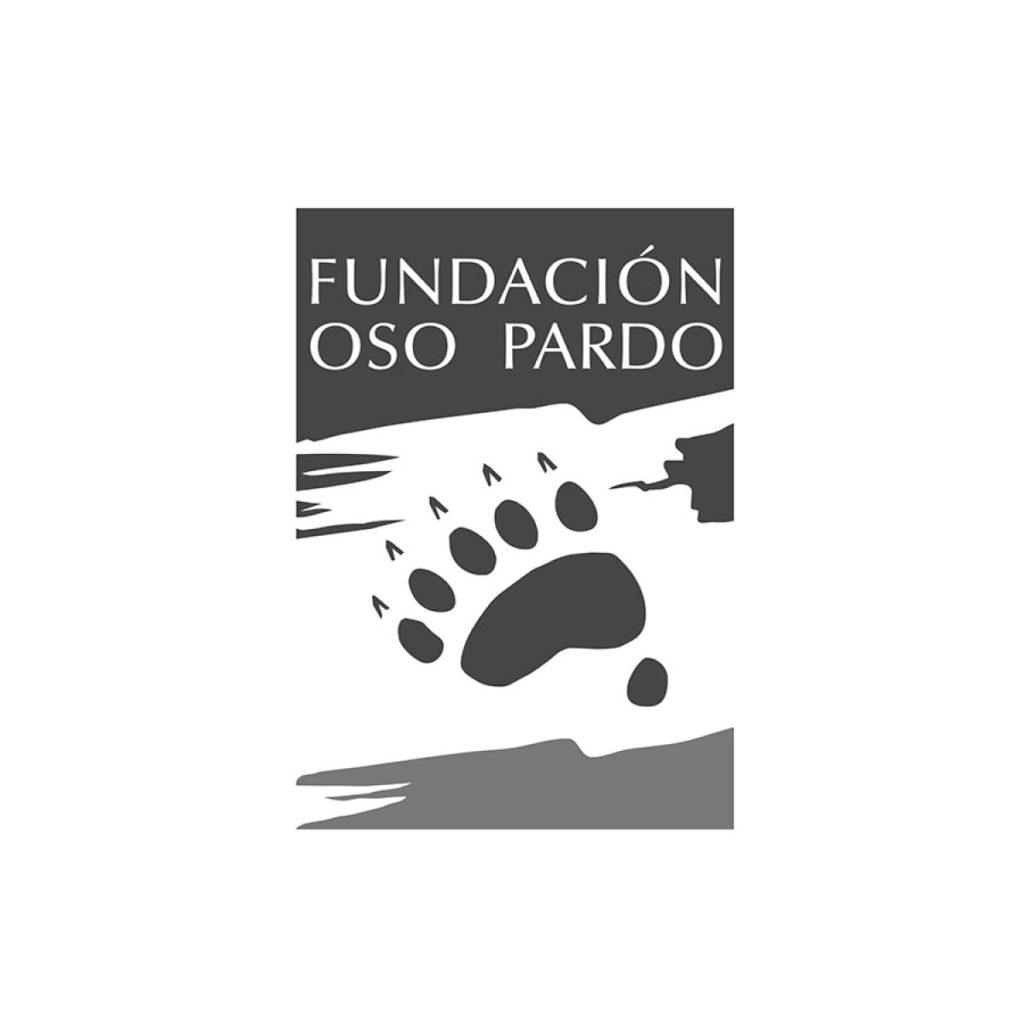
It was here in their forested, mountainous home in Asturias that the journalists learned about the brown bear and the efforts underway to expand and connect the populations. On the first day, the team had the opportunity to observe bears in Fuentes del Narcea Natural Preserve. As evening rolled round, the sun tucked itself behind the peaks of the quartz valleys, and two female bears emerged into the twilight. Journeying through the Cantabrians, the team saw the abundant diversity of habitats in this unique region: the primary old-growth oak forests of Muniellos Strict Nature Reserve; the beech forests of Somiedo Biosphere Reserve; onward to the dramatic, quartzite bluffs of Castilla y Léon; north to the inspiring coastlines, sampling local delicacies and culture, while learning about the unique ethnography of the region.
From a respectful distance, the team observed many bears throughout the trip, learning about their ecological, social and economic importance to Asturias. Golden eagles, wildcats, wolves, chamois and other wildlife roam the pristine valleys. Today, wildlife watching is helping to diversify the rural economy of Asturias. The bear, once vilified and hunted nearly to local extinction, is increasingly seen as part of the region’s natural heritage, and the key to creating new economies for a sustainable future.
FOP is working to increase the connectivity of bear populations. To improve genetic exchange between the western and eastern populations, they are restoring critical habitat corridors with plantations of cherry, apple, alder, whitebeam and buckthorn. Volunteer-led recovery programs are improving social participation in conservation, and 'bear houses' and museums are providing centres for education and heritage. Led by science, FOP ecologists monitor bear movement and promote expansion of the species into more of their historic range. To improve coexistence, the organisation works with local communities to increase social acceptance of the brown bear as an ambassador for wild Spain.
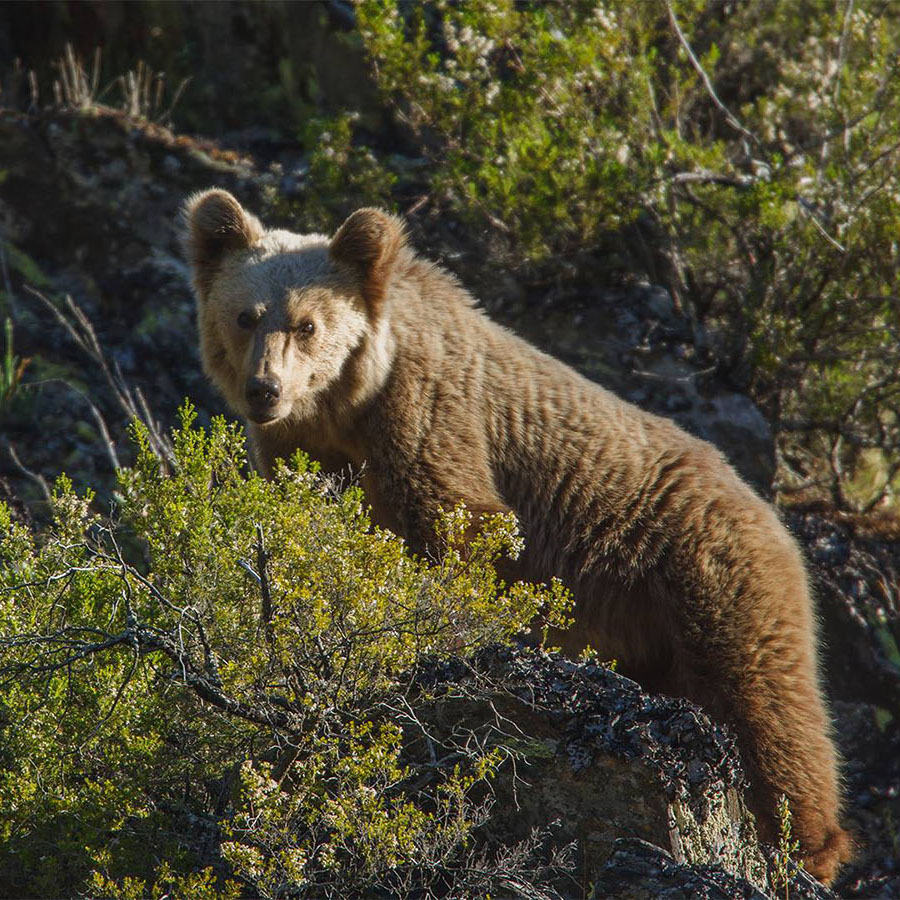
Through the FIRNS initiative, TENT is working on a new blueprint for investment into nature recovery.
8 international journalists tell the story of Belizean conservation
A civilised nation, killing more than 70% of its wolves, flies in the face of science.

